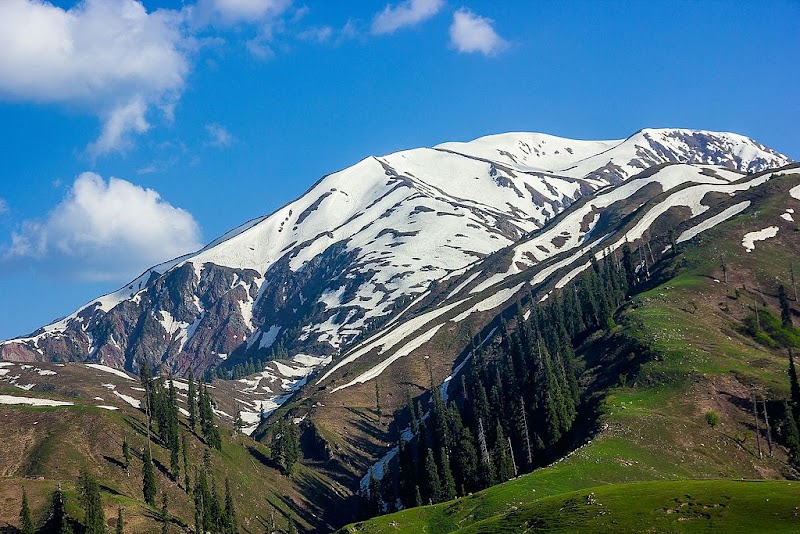
Forest Conservation Days: Exploring Abbottabad’s Verdant Heart
Experience the rugged charm of Abbottabad’s forests through Forest Conservation Days, where hiking meets hands-on preservation. This event offers an active engagement with nature, combining moderate trails with meaningful conservation work in one of Pakistan’s lushest mountainous regions.
Wear sturdy hiking boots
Expect uneven, root-strewn paths with rocky patches that demand good ankle support and grip to prevent slips.
Pack at least 2 liters of water
The trail lacks reliable natural water sources; staying hydrated is critical, especially during warm months.
Start early to avoid midday heat
Morning air is cooler and forest trails are quieter, creating ideal conditions for both hiking and conservation work.
Bring layered clothing
Weather shifts quickly—foggy mornings can give way to warm afternoons. Layers help maintain comfort throughout.
Forest Conservation Days: Exploring Abbottabad’s Verdant Heart
Forest Conservation Days in Abbottabad, Khyber Pakhtunkhwa invite adventurers to engage with the region’s dense forests—an ecosystem both resilient and demanding respect. These days blend purposeful conservation work with immersive hikes that thread through pine and cedar groves, where every step meets soft earth and the whisper of timber giants swaying above. Trails range roughly 6 to 10 kilometers, with elevation gains around 400 to 600 meters, creating moderate physical challenge amid uneven, sometimes rocky terrain.
Embarking early in the day is wise; the forest awakens midday, light filtering through branches in shifting patterns. The pine needles crunch underfoot as you push upward, the cool mountain air daring you to match its steady pulse. Conservation days often include guided activities—tree planting, trail clearing, and educational briefings that root the adventure in purpose. This transforms the forest from a passive backdrop to an active partner.
Trail conditions vary. Expect stretches of packed soil interrupted by exposed roots and occasional loose stones, so sturdy footwear with good ankle support is non-negotiable. Carry sufficient water—2 liters minimum per person—and snacks for energy, as natural springs are rare along the route. Weather can shift quickly; layering is practical. Morning fog may cloak the canopy, but by noon, views unfold over the surrounding hills, rewarding persistence.
Planning a visit during Forest Conservation Days means more than a hike; it’s a chance to witness local efforts combating deforestation and erosion while enhancing the habitat for native species like the chirping Himalayan monal or elusive leopards that mark these woods as home. Keep an eye out for birdcalls and sudden rustles—nature’s way of reminding you this forest is fiercely alive, not merely scenery.
For the practical traveler, allow 4 to 5 hours for combined hike and conservation activities. Group sizes are kept small to minimize impact and maximize engagement, ensuring every participant leaves with a tangible contribution and deeper understanding. The trails are open year-round, but spring through early fall offer the best conditions for both hike and volunteer work.
Whether you come for the green canopy, the crisp mountain air, or the chance to stand with caretakers of the land, Forest Conservation Days provide a robust adventure rooted in stewardship. Equip yourself properly, prepare physically, and bring an open mind ready to match the forest’s fierce selfhood with your own determination.
Nearby Trips
All Adventures
Boat Charters
Water Activities
Adventures near Abbottabad, Khyber Pakhtunkhwa
Discover the unique and memorable adventures that make Abbottabad, Khyber Pakhtunkhwa special.
Frequently Asked Questions
What types of conservation activities can participants expect during Forest Conservation Days?
Activities include tree planting, removing invasive species, trail maintenance like clearing fallen debris, and educational sessions on forest ecology to deepen participants’ connection with local conservation efforts.
Are the trails suitable for beginners or families?
While the trails are moderate with some elevation gain and uneven terrain, they are accessible to those with basic hiking experience. Families with older children who can manage rugged paths will enjoy the experience, but very young children may find it challenging.
How does the local community support these conservation efforts?
Local organizations collaborate with volunteers and forest departments, emphasizing sustainable forestry and educating residents on preventing deforestation and erosion, creating ongoing stewardship that visitors can actively join.
What kind of wildlife might I encounter on these hikes?
Be alert for Himalayan monal pheasants, squirrels, various forest birds, and signs of elusive mammals like leopards. Early mornings increase chances of spotting animal activity, though many creatures keep to denser cover.
Are there any permits or fees required for participating?
Forest Conservation Days are typically organized through registered volunteer groups and may require prior registration, but hiking the trails outside these events generally does not require permits. Confirm details with local organizers.
How should I prepare physically for the conservation hikes?
Focus on cardiovascular endurance and leg strength to handle the moderate elevation change and prolonged walking. Basic tool-handling skills will be taught on site, but a readiness to engage with active work is important.
Recommended Gear
Waterproof hiking boots
Provide traction and ankle support on mixed terrain, especially useful in slippery or wet conditions.
Reusable water bottle or hydration pack
Ensures adequate hydration on trails where natural springs are scarce.
Layered clothing
Adjusts to temperature changes from chilly mornings to warm afternoons.
Gloves for conservation work
Protect your hands during planting or removing brush, reducing injury and discomfort.
Local Insights
Hidden Gems
- "A viewpoint overlooking the Haripur valley, accessible by a short offshoot trail, offers panoramic landscapes rarely crowded with visitors."
- "Small natural springs tucked among cedars provide refreshing stops but remain few and should not be relied upon exclusively."
Wildlife
- "The Himalayan monal, Pakistan’s national bird, is often heard before it’s seen, issuing its distinctive call from high branches."
- "Leopard tracks occasionally surface on softer soil patches — a sobering reminder of the wildness threading through these woods."
History
"Abbottabad’s forests are entwined with centuries of community forestry and traditional use by local tribes, evolving today into modern conservation zones blending heritage with environmental stewardship."
